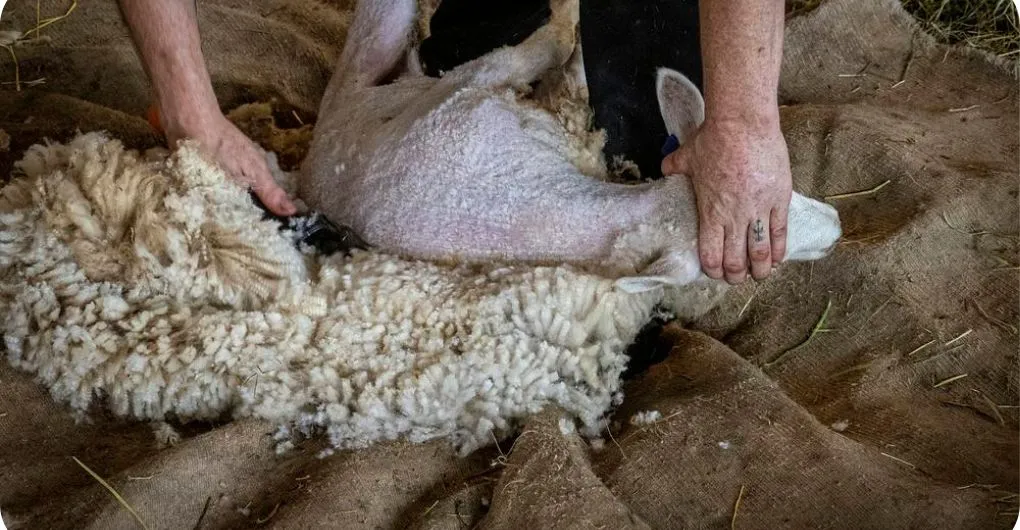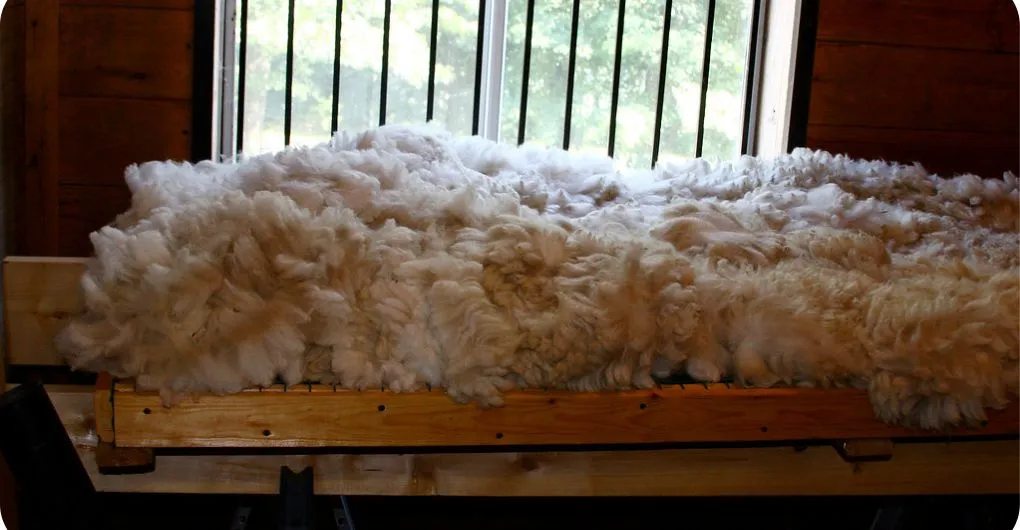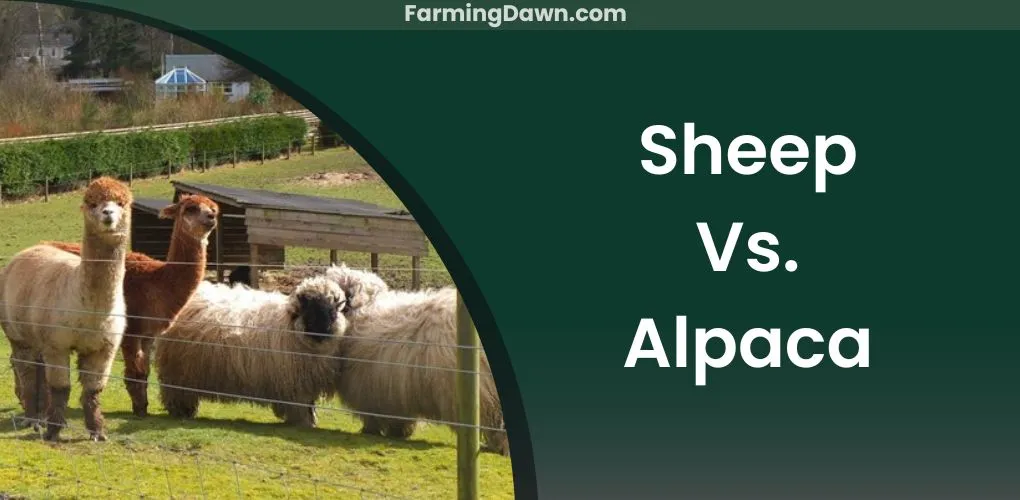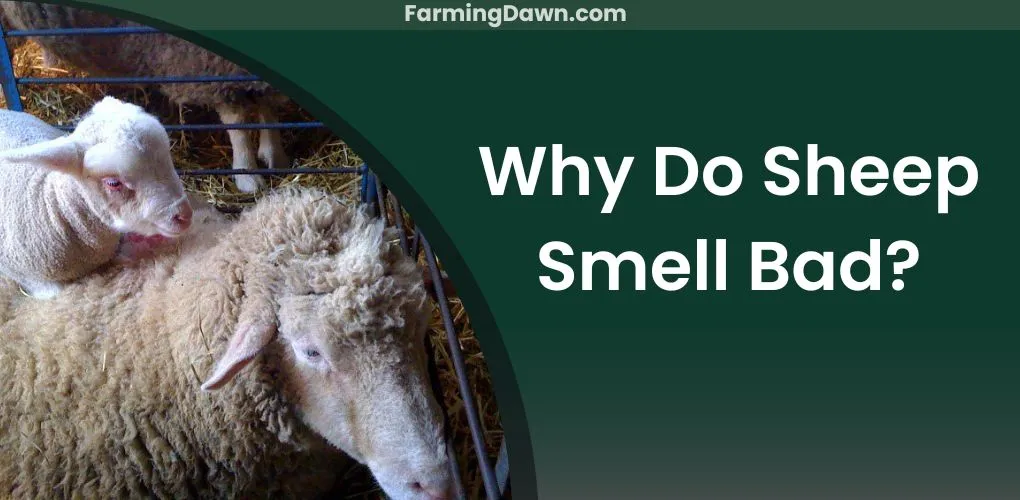For many years now, shepherds have been utilizing both sheep and alpacas in their flock management techniques. Yet despite having similar care requirements, there are significant distinctions between these two animals when it comes to how they interact with us humans. By comparing sheep vs alpacas and understanding their traits and characteristics, we can determine which of them would make a better addition to our herd or farmstead.
So come on down the rabbit hole with us as we delve into the fascinating world of sheep vs alpaca – exploring each creature’s strengths & weaknesses to learn more about what makes them unique so that we can all benefit from their different offerings.
Characteristics Of Sheep |
Characteristics Of Alpacas |
| Resistance: Sheep are known for their hardiness and resilience, as well as their ability to thrive in a variety of climates. | Resistance: Alpacas are resistant to cold environments, therefore you will not have any difficulty in breeding them in harsh climates. |
| Fleece: Their fleece characteristics make them ideal for many uses, such as producing wool fabric or providing meat for food production. | Fleece: Alpaca fiber is prized among textile enthusiasts because it is stronger than wool but still very soft. |
| Colors: The sheep come in various colors such as black, grey, brown, white, and dark brown. | Colors: Alpacas come in a variety of colors including white, fawn, brown, and black. |
| Sheep spitting Behavior: Sheep spit is a process known as cudding. They spit food and then chew again to extract more nutrients. | Alpaca Spitting behavior: Alpacas have a strange spitting behavior to show inconvenience. Alpaca spit to disapprove of human presence or to show dominance |
| Lanolin: Sheep contains lanolin, which helps in dry skin and hair treatment. | Lanolin proof: Alpaca fur does not contain lanolin, thus saving them from the smell. Whereas, Sheep contains lanolin, which is also the reason why sheep smell bad. |
| Sociable: Sheep are highly docile and sociable animals. They interact with humans and other animals very easily. | Sociable: Just like sheep, alpacas are also very docile and friendly livestock for your farm. |
Types Of Sheep Breeds
Different types of sheep breeds can be raised, each with its unique characteristics. Animal breeding has been around for centuries, and many farmers have used these techniques to create new varieties of sheep.
- Merino Sheep Breed
The most common type of sheep breed in the United States is the Merino. This breed was developed in Australia and New Zealand but also found success in other parts of the world. They are known for their soft wool which makes them excellent for clothing production.
Other popular breeds include:
- Dorset Horns
- Hampshire Downs
- Jacob Sheep
- Lincoln Longwools
- Romanovs
- Southdowns
- Texel Sheep
Each breed has certain traits that make them desirable to farmers such as hardiness or good meat quality.
No matter what type of sheep you’re looking to raise on your farm, there will always be something special about owning animals bred specifically for their purpose – whether it’s providing food or fiber or simply companionship!
Types Of Alpaca Breeds
Now that we’ve established the differences between sheep and alpacas, let’s take a look at the various types of alpaca breeds. Alpacas are classified into two main categories:
- Huacaya Alpacas
- Suri Alpacas
This distinction is based on their fleece type. Huacayas have short, crimpy fiber whereas Suris have long silky locks. Both types of alpaca produce amazingly soft, warm fiber which is highly sought after for its luxurious feel. One such example of the Huacaya alpaca is the pygmy alpaca.
You should remember that while each breed has certain characteristic features they all share one thing in common; an excellent diet and feeding practices are essential for good health.
History And Origin Of Sheep
How can we not talk about the history and origin of sheep while comparing sheep vs alpaca? Sheep have been a part of human life for millennia. For thousands of years, they’ve played an integral role in animal husbandry and herd management.
The first domesticated sheep are believed to have been found in the Middle East around 8,000 B.C. By 4,000 B.C., sheep had spread throughout Europe, Asia, and Africa. Ancient cultures bred sheep for many different purposes, including for their wool, milk, and meat.
The ancient Egyptians were especially fond of sheep, and likely had some of the first domesticated flocks. Sheep were used to sacrifice to their gods, and sheep-wool blankets were even placed in Pharaohs’ tombs.
Today, sheep are found in almost every corner of the world. They are kept for meat, milk, wool, and leather, and provide an important source of income for millions of people. Sheep also play a major role in the ecology of grasslands and rangelands, helping to maintain the environment and prevent soil erosion.
History And Origin Of Alpacas
Unlike sheep, alpacas are not domesticated animals. They originated in the Andes Mountains several thousand years ago and were first introduced to North America by Spanish explorers during the colonial period.
Alpacas are related to the llama, guanaco, and vicuña, which are all members of the camelid family. Alpacas were originally bred by the indigenous people of South America for their wool and meat. Today, they are primarily bred by farmers for their wool, which is used in the production of high-quality garments and luxury items. Alpacas are also used as guard animals to protect livestock from predators.
In terms of farming practices, alpacas require less space than other large livestock breeds like cows or horses. Additionally, their soft-footed nature also limits the damage caused by trampling pastures compared with hoofed livestock animals such as cattle or sheep.
Here’s a quick summary of alpaca husbandry:
- Alpacas do not require supplemental grains and can survive on grass hay alone.
- Breeding programs focus on selecting desirable traits from each species (Huacaya vs Suri).
- Their delicate feet limit the damage caused by trampling pastures compared with hoofed livestock animals.
- Animal agriculture benefits from utilizing alpaca fiber in clothing production due to its quality and variety of colors available.
Feeding Habits & Care Requirements For Sheep
Sheep are easy to care for and require minimal nutrition requirements. Their feeding practices differ from alpacas in that they need less protein and higher levels of roughage. They can graze on grass, hay, or silage, but should also be offered a mineral supplement to ensure their nutritional needs are met.
Animal care practices generally involve providing them access to fresh clean water at all times, proper shelter such as field shelters, and adequate grazing areas with plenty of vegetation.
When it comes to animal nutrition requirements and feeding habits, sheep have fairly basic needs compared to other animals. As long as these needs are met consistently throughout the year, they will remain healthy and contented. With regular check-ups by a veterinarian, good husbandry practices, and appropriate feed management strategies you can help keep your flock happy and healthy.
Feeding Habits & Care Requirements For Alpacas
Now that we’ve discussed the feeding habits and care requirements for sheep, let’s take a look at those of alpacas.
Unlike sheep, which graze on pasture grasses, alpaca nutrition should consist of hay supplemented by minerals and vitamins necessary to support optimal health. Additionally, they require higher levels of protein in their diet as well as access to fresh water throughout the day.
Here is what you need to consider when it comes to alpaca nutrition:
- Hay – Choose high-quality hay – about two-thirds of your alpaca’s daily intake should come from this source.
- Protein – Make sure there is enough protein in your alpacas’ diets; typically 16% or more is ideal depending on age and weight.
- Vitamins & Minerals – Supplement their diets with minerals specifically designed for alpacas, plus any extra vitamins they may be lacking due to their environment or other factors.
- Fleece Weight – Maintaining an appropriate fleece weight requires careful monitoring of your animals’ dietary needs.
Too little food can cause stress while too much can lead to excessive wool growth which could impair movement and affect performance in shows or breeding activities.
Sheep Wool Vs Alpaca Wool
The debate between sheep wool and alpaca wool has been raging for centuries and is an essential topic while comparing sheep vs alpaca. It’s a subject of passionate discussion among knitters, wool weavers, and those who love to cuddle up in their favorite blankets on cold winter nights. But what sets the two materials apart?
Softness
But how do they stack up in terms of softness? Sheep wool is naturally softer than alpaca wool because its fibers are finer and shorter. But don’t let this fool you – alpaca fiber still has a lovely feel to it! It’s also silky smooth, making it perfect for accessories like sweaters and scarves – items meant to be close to your skin. So if you’re after something with a luxurious feel, alpaca might just fit the bill.

Warmth & Sensitivity
The softness of sheep wool and alpaca wool is undeniable, but certain qualities set these two fabrics apart. When considering warmth and sensitivity, it’s clear why both materials have their unique appeal.
Sheep wool offers an unbeatable level of comfort and insulation due to its natural structure, which allows air pockets between the fibers to trap heat. It also has a higher moisture-wicking capability than alpaca wool, making it great for those who tend to perspire easily or live in climates with high humidity levels. Plus, sheep wool is more breathable than other wools so you won’t overheat during especially hot days.
Alpaca wool is renowned for its lightweight yet insulating properties, ensuring maximum warmth without feeling heavy on your body. The dense core fibers offer superior resistance against water vapor for greater protection from cold temperatures and wind chill, whilst still allowing your skin to breathe comfortably throughout the day.
Additionally, alpaca wool provides excellent tactile sensitivity when compared to other types of animal fur or fleece fabric—perfect if you’re looking for a robust material that will keep you warm even in harsh conditions.
Ecological Impact
When it comes to wool rugs, sheep and alpaca wool both have their unique ecological impact. Sheep’s wool is the most widely used material for making carpets due to its affordability and availability. While it can be sustainably sourced from farms that practice ethical animal husbandry, there are still environmental costs associated with the mass production of this product.
Alpaca wool on the other hand is much more expensive but also more sustainable because it requires less energy to produce. Additionally, alpaca fiber has a longer life than sheep’s wool and does not require harsh chemicals or excessive water use during processing.

Waterproof Properties
Sheep wools are known for being more ‘waterproof’ than alpaca wools; this is because the fibers of the sheep’s wool contain an oily substance that acts as a natural water repellent. This means that garments made from sheep wool will be better able to shed rain or snow compared to those made from alpaca wool.
On the other hand, alpaca wool is much softer and lighter weight than its counterpart – so it might be preferred by people who want clothing with a luxurious feel without sacrificing any protection against moisture.
Baby Alpaca Wool Vs. Merino Sheep’S Wool
When it comes to wool, baby alpaca and merino sheep’s wool have unique characteristics. Both are luxurious fibers that provide a variety of benefits. But if you were forced to choose between the two, which would be best? To answer this question correctly we must look at each fiber in greater detail.
Alpaca Yarn
First off, let’s start with alpaca yarn. As we discussed earlier, alpaca wool is known for its incredibly soft feel as well as being lightweight yet incredibly strong and durable. The warmth-to-weight ratio also makes it an ideal choice for both summer and winter garments because it will keep you warm without feeling too heavy or bulky.
Additionally, alpaca fiber does not contain lanolin like traditional sheep’s wool so people who may find themselves allergic to the latter can still enjoy wearing products made from this material.
Merino Sheep’s Wool
Next up is merino sheep’s wool; a popular choice due to its extreme breathability and moisture-wicking properties – making sure your body temperature stays regulated even during strenuous activities such as hiking or skiing. Merino sheep’s wool has also been proven to possess incredible odor resistance capabilities as well as provide added protection against UV rays when compared with other natural fabrics like cotton.
Plus, unlike baby alpaca wool, merino wool contains some lanolin which helps make it water-resistant and able to repel dirt more effectively than its counterpart.
Comparison Of Economic Benefits
When it comes to economic benefits, sheep and alpacas both have a lot to offer. For those looking for luxury fibers, both animals are great options. But if you’re looking for the best deal on fiber use, then sheep win out every time.
That’s because their wool is much more abundant than that of an alpaca. It may not be as soft or luxurious, but it’s still incredibly valuable in terms of creating textiles and garments. And when compared with other animal-based fibers like cashmere, mohair, or angora rabbit fur, wool from sheep wins hands-down!
But don’t discount alpaca just yet – their fleece can be spun into some truly stunning yarns and fabrics. Many luxury designers now feature collections made entirely from alpaca fiber. The cost is certainly higher due to its scarcity (alpacas produce far less fleece than sheep), but the result is often worth the extra expense!
So while sheep may dominate in terms of the sheer volume of fiber produced each year, alpacas reign supreme when it comes to producing high-quality materials for clothing and accessories.
Conclusion
As we wrap up our discussion of sheep vs alpaca, it’s easy to see why sheep and alpacas are both popular livestock animals. From their unique characteristics and history to their different care requirements and economic benefits, these two species can be great options for any farmer looking to diversify their farm. At the end of the day, there is no right answer when it comes to which species is better because it is your farm and you are supposed to make decisions about it. I explained all qualities and if you have any other questions ask me in the comments.






